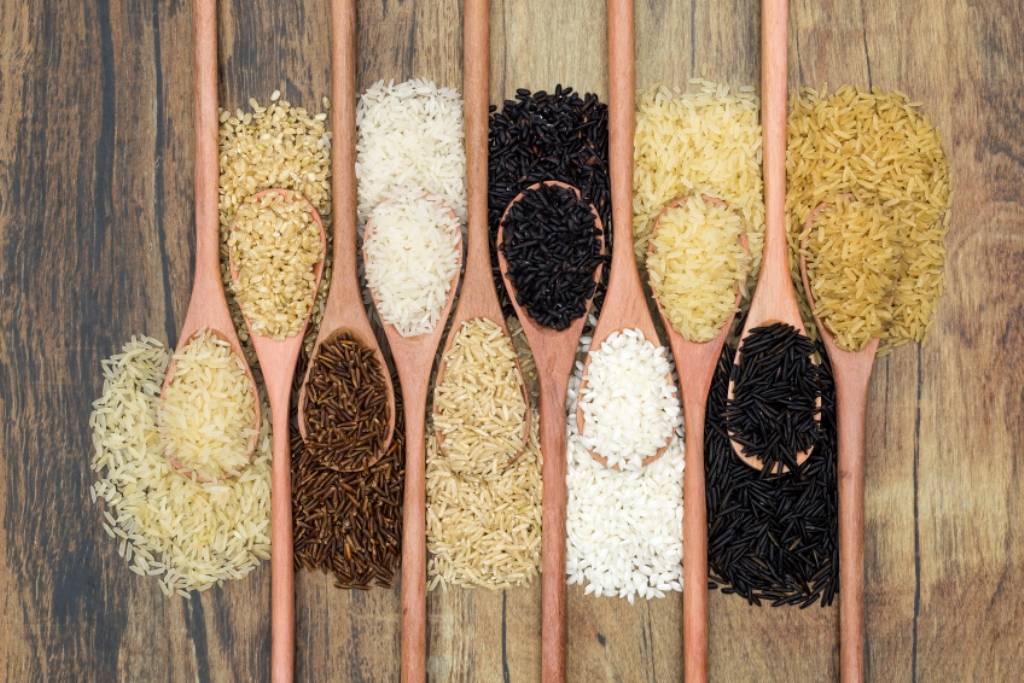
If you eat rice cereal for breakfast and brown rice for dinner almost every day, it's time to spice things up, especially if you're feeding young children. This is due to the presence of inorganic arsenic in rice, a potentially hazardous metal that can cause health issues with prolonged exposure.
Clients seeking nutrition guidance frequently ask if rice is healthy as a dietary staple and how much rice is safe for youngsters to consume (less than what adults eat). Here's what you should know.
What is the source of arsenic?
Arsenic is a hazardous environmental contaminant found in soil and groundwater. It's also present in pesticides and industrial processes. Although arsenic-containing pesticides are generally banned now, some arsenic from decades ago remains in soil today, and certain industries continue to deposit arsenic into soil and groundwater, which ends up in our food supply.
The negative health consequences of arsenic exposure are determined by a number of factors, including the kind of arsenic (organic or inorganic), the degree of exposure, and the age of the individual exposed to the arsenic.
Organic arsenic is not as dangerous as inorganic arsenic, which is very poisonous and is the kind discussed in this article in terms of health risk. Unfortunately, researchers have discovered inorganic arsenic in a variety of rice-based goods. In fact, rice is the most frequent arsenic-containing item in our diet.
Unfortunately, climate change may exacerbate the situation. According to a new study, arsenic absorption by rice plants will increase as temperatures rise.
Rice plants, more than any other grain, quickly absorb arsenic from soil and water, and it remains intact whether we consume rice or convert it into rice flour or brown rice syrup, a honey-like sweetener. Food producers frequently utilize these components to make crackers, baked goods, breakfast cereals, and rice-based infant meals.
If you're thinking, "But I only eat organic brown rice... surely that's healthy," you're in for a shock:
Inorganic arsenic is present in the outer husk of rice grains, which remains intact in brown rice, signifying that brown rice has more arsenic than white rice. And arsenic residues from previous pesticide usage can be found in organic farm soil.
What is the risk?
Chronic exposure to inorganic arsenic poses the biggest health danger, and this is more likely to occur through polluted water than from rice. The short-term health consequences that can arise from high levels of arsenic are at doses considerably greater than what is normally found in foods.
Of course, eating highly contaminated rice products many times a day, week after week, is not a good idea, especially if you cook in arsenic-affected water. This is an example of chronic arsenic exposure, which has been related to an elevated risk of Type 2 diabetes and cardiovascular disease. Chronic arsenic poisoning can also result, which can cause skin sores and skin cancer.
It's a little different with babies and toddlers, when even low-level arsenic exposure has been linked to neurodevelopmental problems. Arsenic in children's diet has been related to cognitive development, IQ, and memory problems.
Arsenic can also harm a pregnancy and increase infant mortality. When a newborn is exposed to inorganic arsenic in utero, he or she is more likely to develop cancer, lung illness, heart disease, and kidney failure.
How much rice should be consumed?
The FDA has found no scientific evidence to recommend that adult consumers modify their rice intake due to arsenic contamination. Rice can be consumed as part of a well-balanced diet, although no specific amounts are suggested daily or weekly.
The greater concern is rice consumption in babies and children, who have up to three times the exposure to arsenic from rice as adults.
Infants and young children consume more food per pound of body weight than adults, thus when their meals contain greater levels of arsenic, they are exposed more than adults.
Instead than relying only on infant rice cereal, the FDA suggests that parents and caregivers provide their newborns a range of grain-based infant cereals.
Rice cereal enriched with iron is an excellent source of nutrition for newborns, but it should not be the sole source or the initial one.
Make informed decisions
The good news is... No matter how often you eat rice there are several ways to enjoy it while lowering your arsenic intake.
• White rice is preferred over brown rice.
• Choose low-arsenic rice, such as white basmati rice from California, India, or Pakistan, or sushi rice cultivated in the United States.
• Cooking rice in arsenic-contaminated well water is not recommended.
• Alternate rice with low-arsenic grains such as oats, barley, quinoa, millet, and wheat for diversity.
It's a good idea to cook rice like pasta, with plenty of extra water, and then drain it off when it's done to remove some of the arsenic. According to the FDA, this technique can lower arsenic levels by up to 60%.
In terms of the commonly recommended practise of rinsing rice before cooking, FDA study reveals that it has no influence on the arsenic concentration of the cooked grain. However, rinsing rice or boiling it in extra water reduces the iron and B vitamins added to enhanced, polished, and parboiled rice by up to 70%.
















